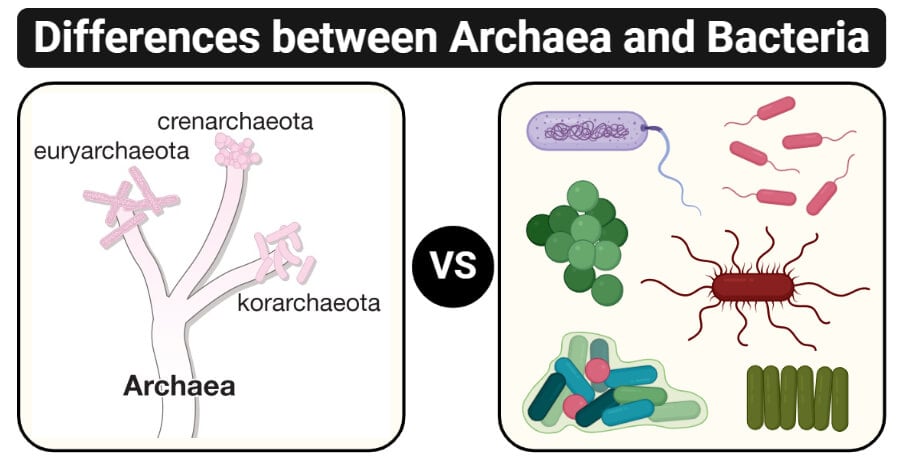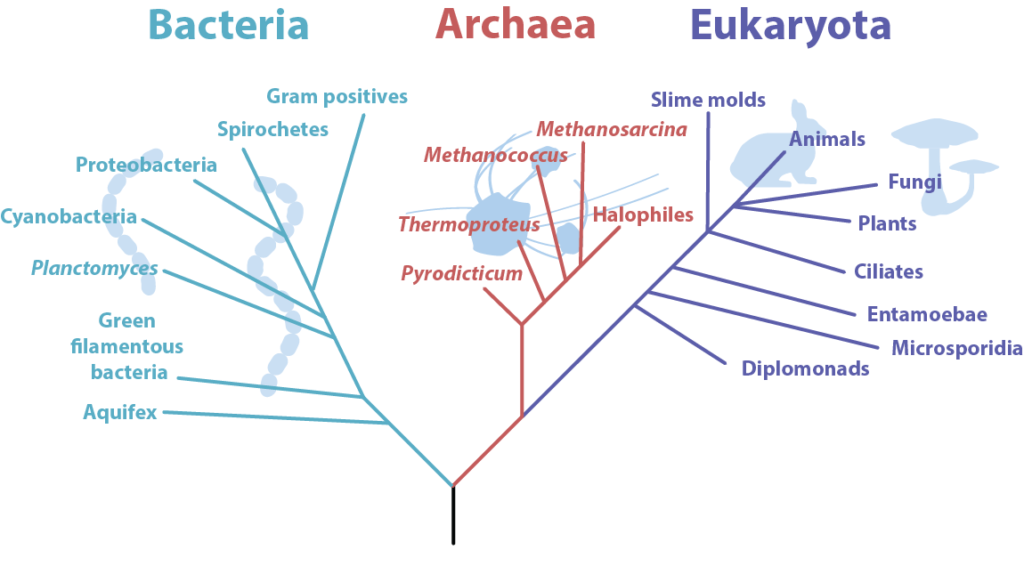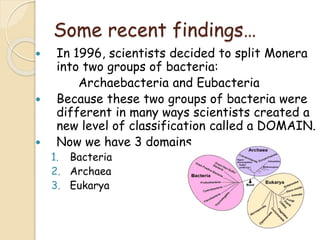Found in the nucleus of a cellB. Although initially believed to have belonged to the same group of unicellular prokaryotes as Eubacteria the Archaea kingdom was later discovered and its.

Archaea Vs Bacteria Definition 15 Major Differences Examples
The members of the kingdom Archaebacteria possess bacteria and eukaryote.

. What factors do the kingdoms protista plantae fungi animalia have in common. He Archaea kingdom Or archaea domain is a biological category that constitutes a diversity of prokaryotic unicellular microorganisms ie they have no nucleus. Archaea ɑːr ˈ k iː ə ar-KEE-ə.
Archaea were initially classified as bacteria receiving the name archaebacteria in the Archaebacteria kingdom but this term has fallen out of use. Eubacteria are usually found in soil water living in and on of large organisms. This term aptly describes the archaebacteria who are thought to have a common ancestor like the bacteria and eukaryotes.
Archaea is a separate kingdom from the eubacteria although both of them are prokaryotes. They are single-celled organisms prokaryotes the same size and shape as bacteria and possess genes and metabolic. Various types of cell walls exist in the archaea.
This type of Archaebacteria live in oxegen free enviornments and they produce Methane gasess. What is not a trait of the members in the kingdom Archaebacteria. Prokaryotes Archaebacteria no nuclear membrane.
Archaebacteria eubacteria and cyanobacteria are the three domains of kingdom monera. Which statement best describes members of the plant kingdom. They are all eukaryotes.
Archaea domain Archaea any of a group of single-celled prokaryotic organisms that is organisms whose cells lack a defined nucleus that have distinct molecular characteristics separating them from bacteria the other more prominent group of prokaryotes as well as from eukaryotes organisms including plants and animals whose cells contain a defined nucleus. However archaea and eukaryotes lack peptidoglycan. The members of the kingdom Archaebacteria possess bacteria and eukaryote.
Therefore the absence or presence of peptidoglycan is a distinguishing feature between the archaea and bacteria. Until the advent of sophisticated genetic and molecular biology studies allowed scientists to see the major biochemical differences between archaebacteria and normal bacteria both. Prokaryotes Eubacteria no nuclear membrane.
Difference between Archaebacteria and Eubacteria. Conditions under which bacteria grow best. There are several archaebacteria kingdom characteristics that help in distinguishing them from eubacteria.
Their funtions and structers of their genes are more similar to EUKARYOTES than to Eubacteria. Which list of characteristics best describes the Archaea Domain. Archaebacteria examples have unusual cell walls membranes ribosomes and RNA sequences.
Archaebacteria is similar in structure to eukaryotes than bacteria. The following table represents the basic structural and characteristic differences with relation to archaebacteria and eubacteria. Multicellular and unicellular eukaryote autotroph.
Archaea has different evolution from the eubacteria as DNA analysis implies. Singular archaeon ɑːr ˈ k iː ə n constitute a domain of single-celled organisms. Ade in the relay neuronedescribe the effect of strychnine on the response.
These microorganisms lack cell nuclei and are therefore prokaryotes. Organisms of kingdom monera are called lower-level organisms because no tissue-level organization is present in them. These characteristics of archaebacteria are as follows.
The Archaebacteria kingdom is made up of THREE different kinds of Archaebacteria. Archaebacteria are classified as one of the six kingdoms of life that living organisms are broken into. They are characterized by maintaining their own differences against other prokaryotes and against other domains at some point classified as similar.
Plants animals protists fungi eubacteria or true bacteria and archaebacteria. Eubacteria are divided into two groups known as gram positive and gram negative bacteria. Archaebacteria are known to be the oldest living organisms on earth.
Which kingdom contains organisms that have cell walls of chitin and cannot photosynthesize. Bacteria and Eukaryotes. Which set of phrases best describes the process of meiosis 2.
Archaebacteria are a type of single- cell organism which are so different from other modern life-forms that they have challenged the way scientists classify life. The first type is called Methanogens. Unicellular prokaryote heterotroph and autotroph.
O no nucleus O require sunlight O reproduce by binary fission O single-celled 1. Humans and mice have differences in only 18 out of 51 amino acids in their insulin proteins. Archaea is single celled or simple structure compared to eubacteria.
They are single-celled organisms prokaryotes the same size and shape as bacteria and possess genes and metabolic. Archaebacteria are called ancient bacteria whereas the eubacteria are called true bacteria. They often have the ability to produce methane.
Which list of characteristics best describes the Bacteria Domain. In the Kingdom Plantae organisms that make their own food are. Archaea membrane lipids are ether linked while eubacteria membrane lipids are ester linked.
Which characteristics best describes the Kingdoms Eubacteria and Archaebacteria. Virtually all bacteria contain peptidoglycan in their cell walls. Which characteristics best describe the Kingdom Fungi.
It includes all the prokaryotic organisms like bacteria cyanobacteria and actinomycetes.

Which Best Describes Members Of The Archaebacteria Kingdoms A Multicellular Plants B Very Large Brainly Com


0 Comments